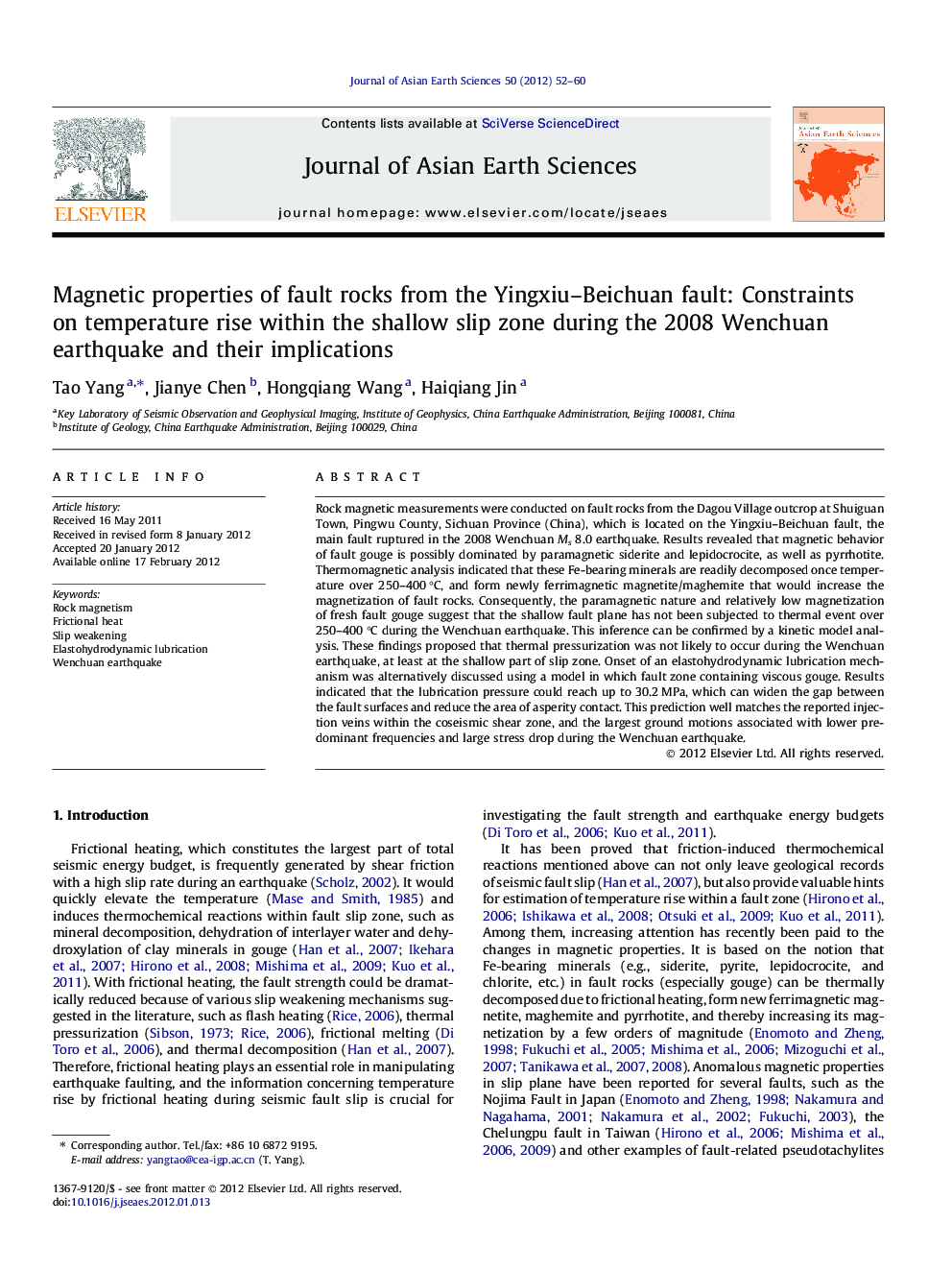| کد مقاله | کد نشریه | سال انتشار | مقاله انگلیسی | نسخه تمام متن |
|---|---|---|---|---|
| 4731439 | 1640414 | 2012 | 9 صفحه PDF | دانلود رایگان |

Rock magnetic measurements were conducted on fault rocks from the Dagou Village outcrop at Shuiguan Town, Pingwu County, Sichuan Province (China), which is located on the Yingxiu–Beichuan fault, the main fault ruptured in the 2008 Wenchuan Ms 8.0 earthquake. Results revealed that magnetic behavior of fault gouge is possibly dominated by paramagnetic siderite and lepidocrocite, as well as pyrrhotite. Thermomagnetic analysis indicated that these Fe-bearing minerals are readily decomposed once temperature over 250–400 °C, and form newly ferrimagnetic magnetite/maghemite that would increase the magnetization of fault rocks. Consequently, the paramagnetic nature and relatively low magnetization of fresh fault gouge suggest that the shallow fault plane has not been subjected to thermal event over 250–400 °C during the Wenchuan earthquake. This inference can be confirmed by a kinetic model analysis. These findings proposed that thermal pressurization was not likely to occur during the Wenchuan earthquake, at least at the shallow part of slip zone. Onset of an elastohydrodynamic lubrication mechanism was alternatively discussed using a model in which fault zone containing viscous gouge. Results indicated that the lubrication pressure could reach up to 30.2 MPa, which can widen the gap between the fault surfaces and reduce the area of asperity contact. This prediction well matches the reported injection veins within the coseismic shear zone, and the largest ground motions associated with lower predominant frequencies and large stress drop during the Wenchuan earthquake.
► We report magnetic properties of fault rocks from the rupture of Wenchuan earthquake.
► Magnetic behavior of gouge could be used for estimating historical temperature rise.
► Shallow fault zone has not been subjected to temperature rise over 250–400 °C.
► Elastohydrodynamic lubrication mechanism is the most likely slip weakening mechanism.
Journal: Journal of Asian Earth Sciences - Volume 50, 2 May 2012, Pages 52–60